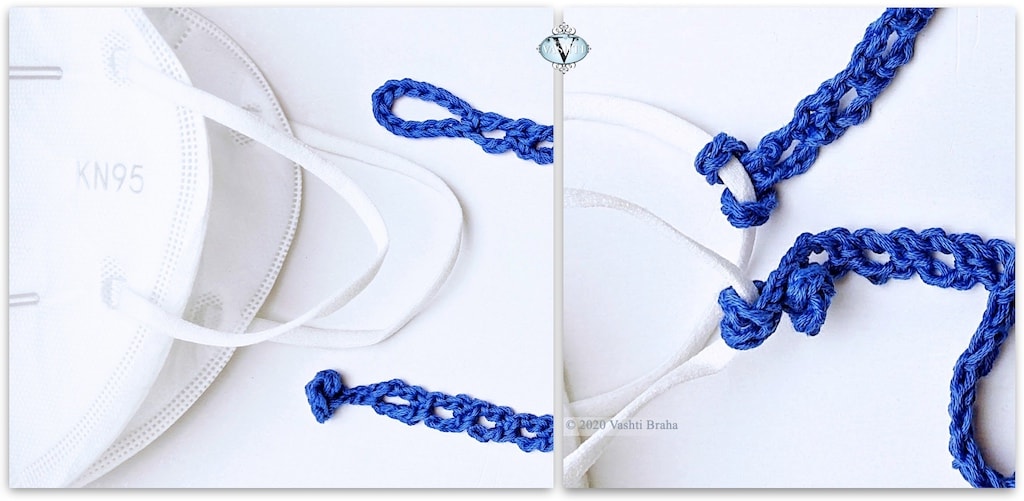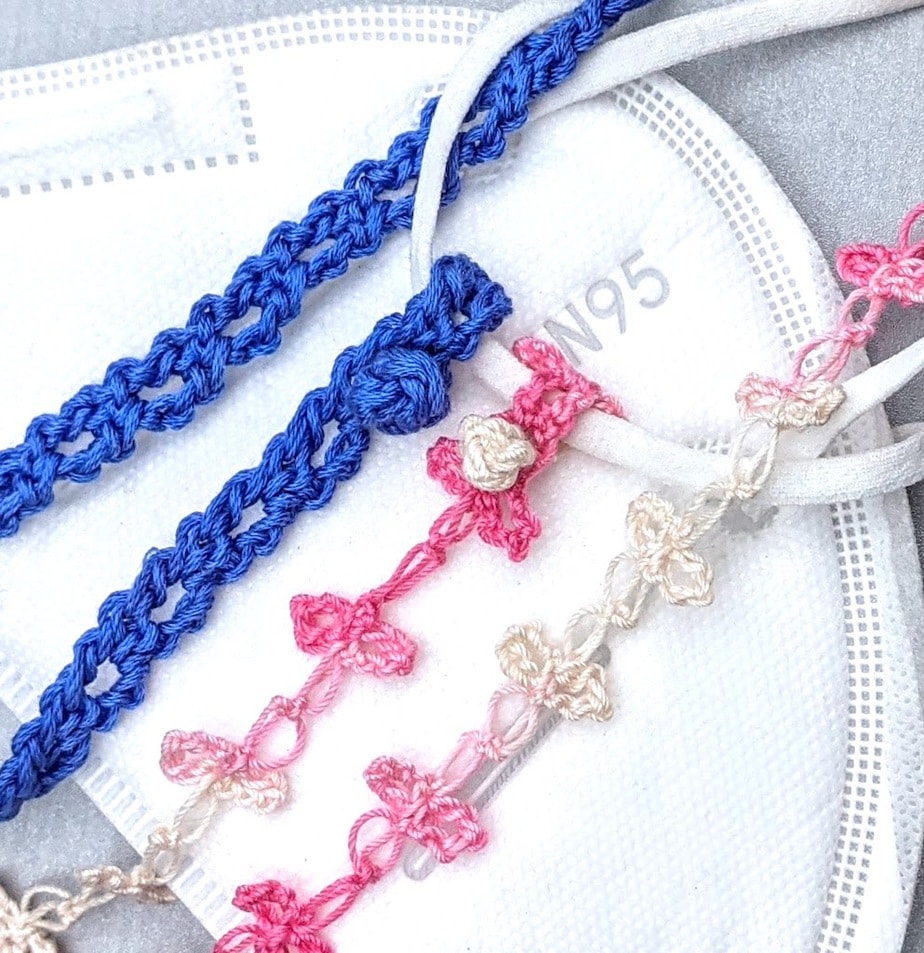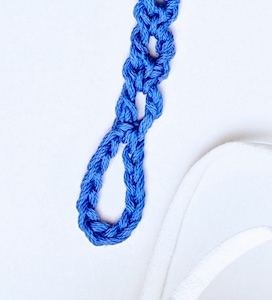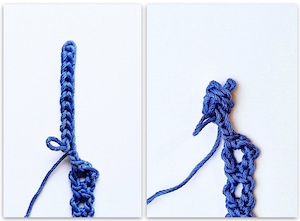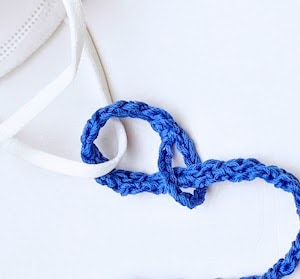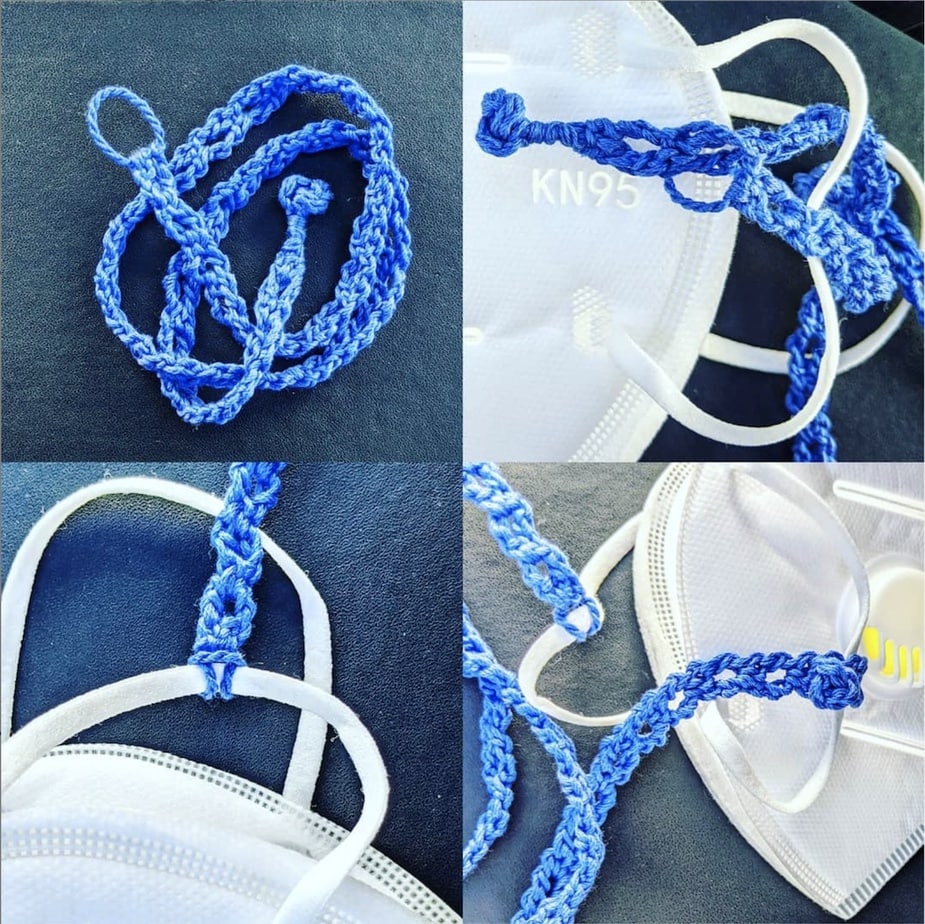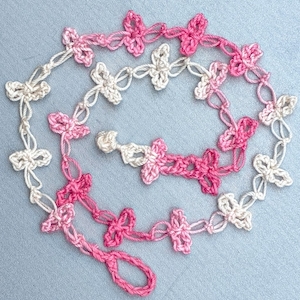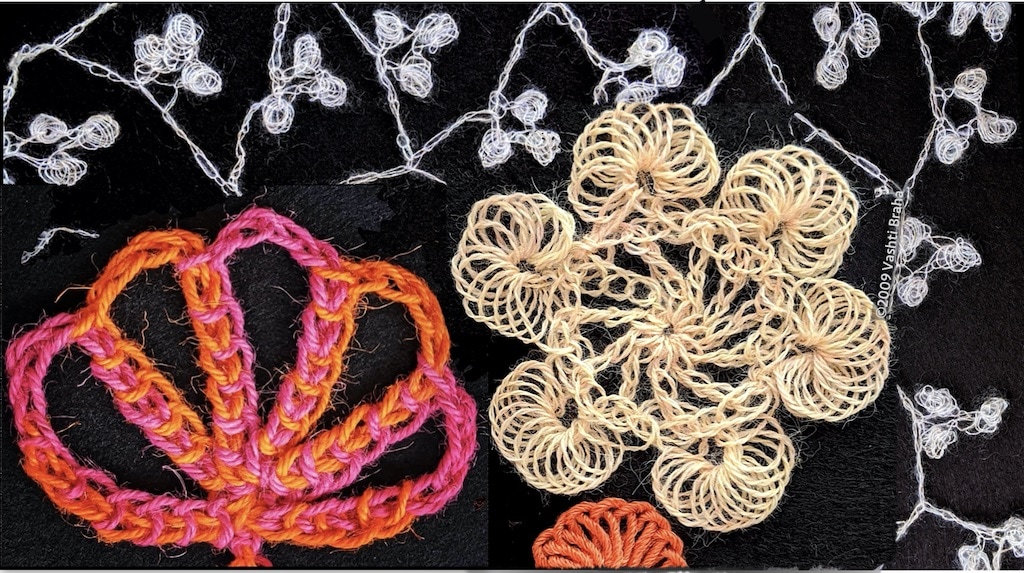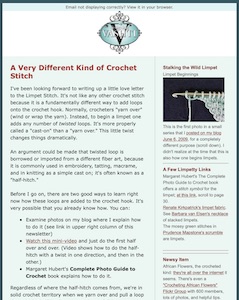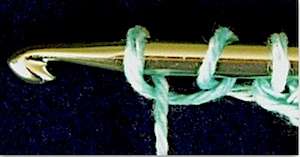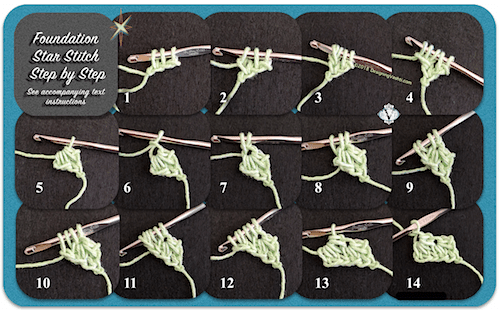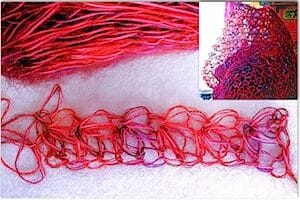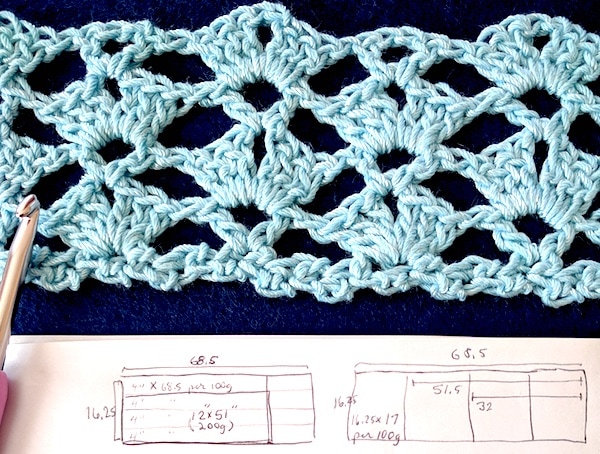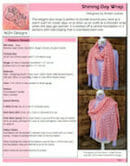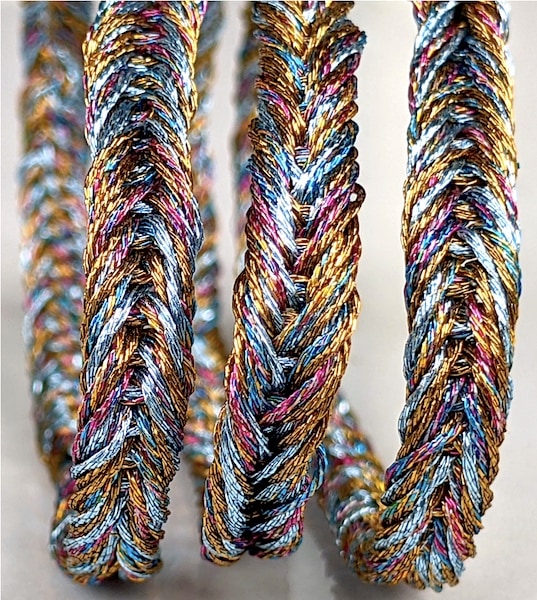
Up to date as of 5/14/2022. This page will be updated again before class time and possibly after.
View high-res versions of Herringbone Chains images in its photo album.
This page is a conveniently clickable group of things I mention in the new Crochet Herringbone Chains class. This two-day class will be held Wednesday, May 18 & Thursday May 19, 2022 at 1:00 pm – 2:00 pm Central Time. — Vashti Braha
A Unique & Versatile Stitch
Herringbone chains are naturally sleek, strong, dense and flatter than regular crochet chains. This makes them as useful for functional reasons as for decorative ones. They twist up less than regular chains. This type of chain stitch has the same structure as the decorative military bugle cord that knot tyers traditionally make. They have a single bugle, double bugle, triple and more; we’ll learn how to crochet all of these!

This handy new crochet stitch resembles fishtail braids and soutache cord. When crocheted very loosely, it also looks like nålbinding.
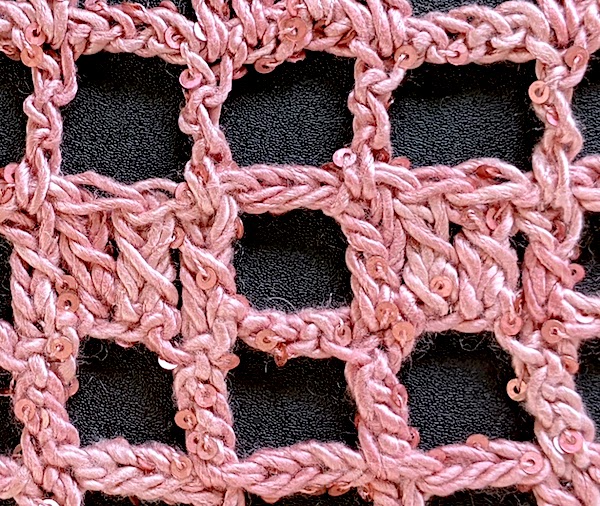
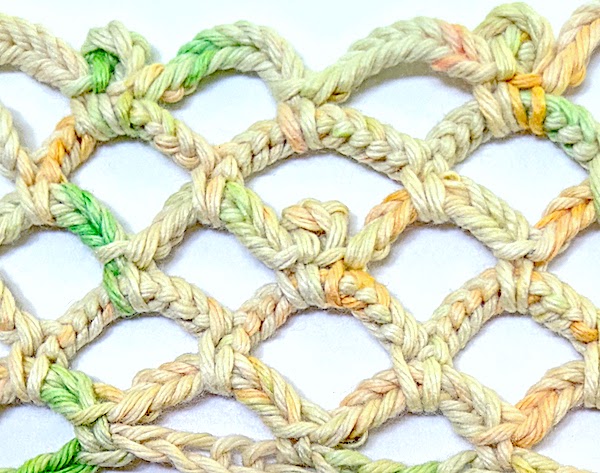
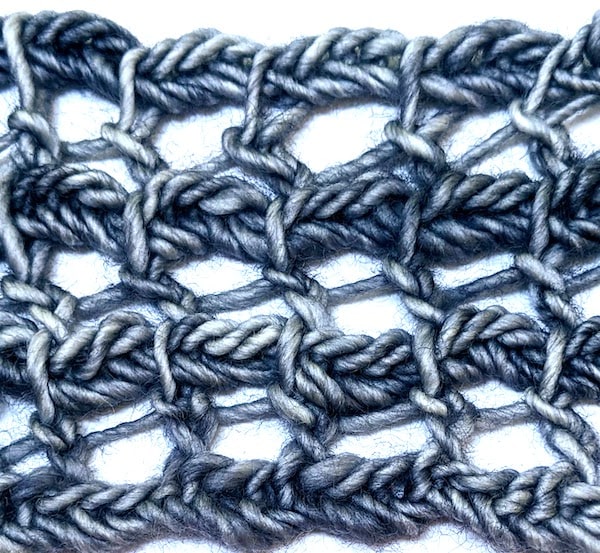
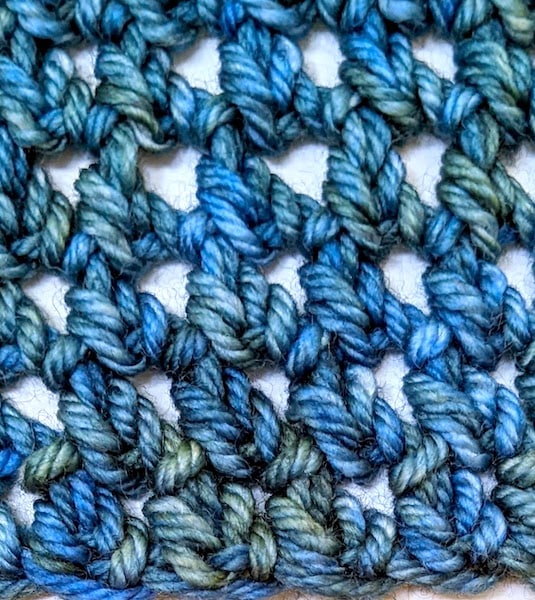
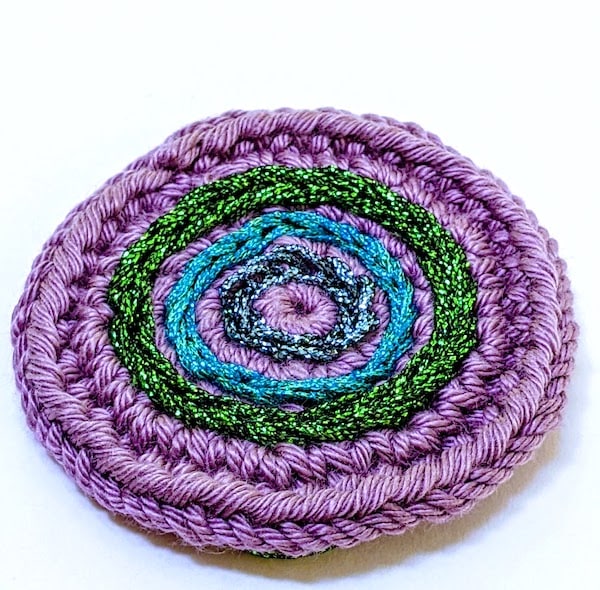
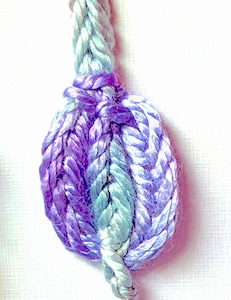
Projects & Stitch Patterns
(In progress.)
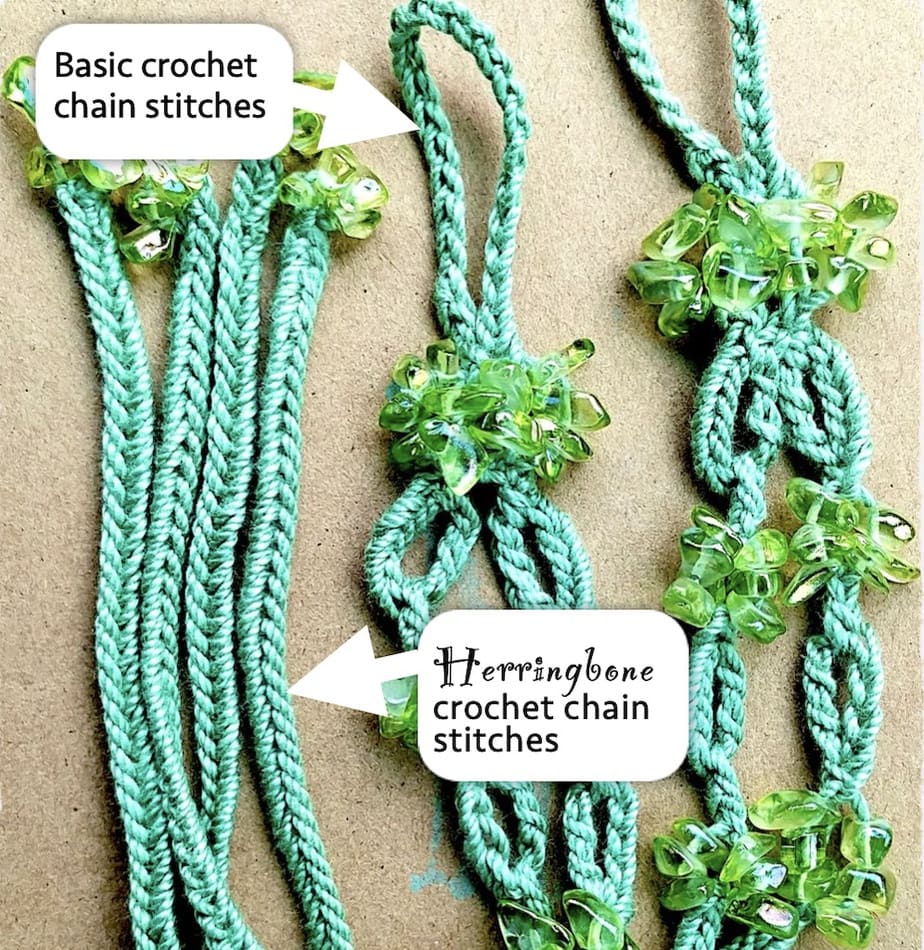
- Nankeen Necklace (2022).
- Tunisian Herringbone Zegue (2022).
- Lizzie Cuff (2021). Pictured at the top of this page.
- Beaded Herringbone Barefoot Sandals (2019), at right (or below if you’re on mobile).
- Rainchains silk skinny scarf (2018). See close up of raindrop in gallery, above.
- Lizard Cord (2018).
Herringbone Chain Swatches & Tests
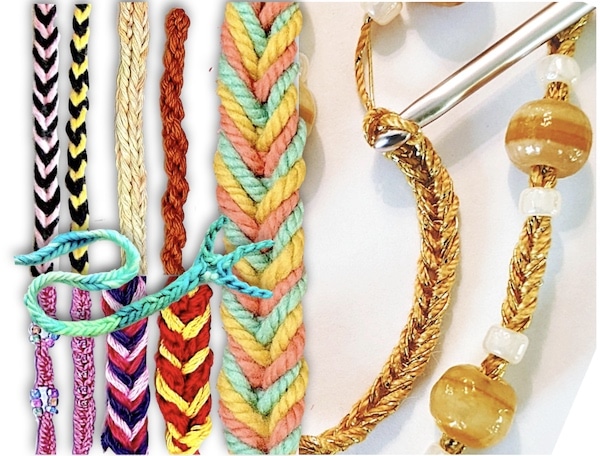
Flickr photo album for this class. A great way to see class material at full resolution, and an array of new uses and variations. I use stitch albums like this one for my own reference. I’m continually creating swatches and photos to add to this album.
My Pinterest Herringbone Chains Pin Board created for this class topic. It compares the look of herringbone chains with other arts–beading, leatherwork, embroidery, etc.
Recommended Articles
- “Fancy Cords in 360°” Crochet Inspirations Newsletter Issue #17 (04/28/2011; most links in it are out of date)
- “Tweak Those Gaps Along Row Edges” Crochet Inspirations Newsletter Issue #25 (08-2011; most links are out of date)
- “Effect of ‘Sproing’ fibers on stitches”: Vashti’s Crochet Inspirations Newsletter Issue #11 (Feb 3 2011; links in it are out of date)
- “Wish Bracelets: Why Not Crocheted?” Vashti’s Crochet Newsletter Issue #69 (07/04/2015; most links are out of date)
- “What IS Crochet, Really?” Vashti’s Crochet Newsletter Issue #103 (10/2020)
Inspiration Boards for this Class
Still need to register for this class? Register with CGOA. This is a NEW two-hour class held online over two days: Wednesday, May 18 & Thursday May 19, 2022 at 1:00 pm – 2:00 pm Central Time. Registration closes 5/15/22 or when the class is filled.
